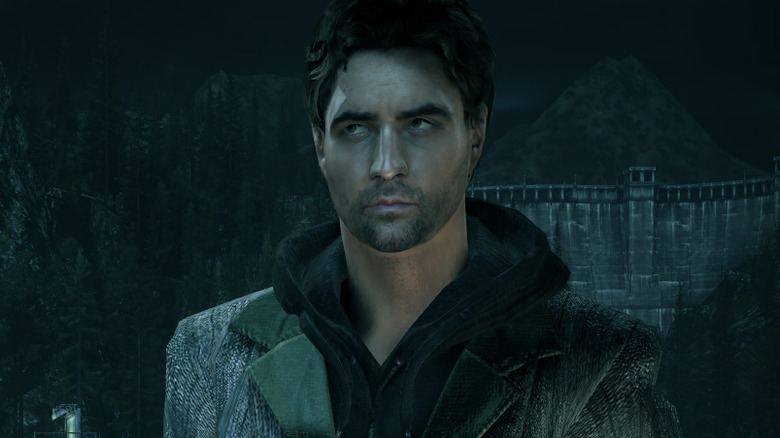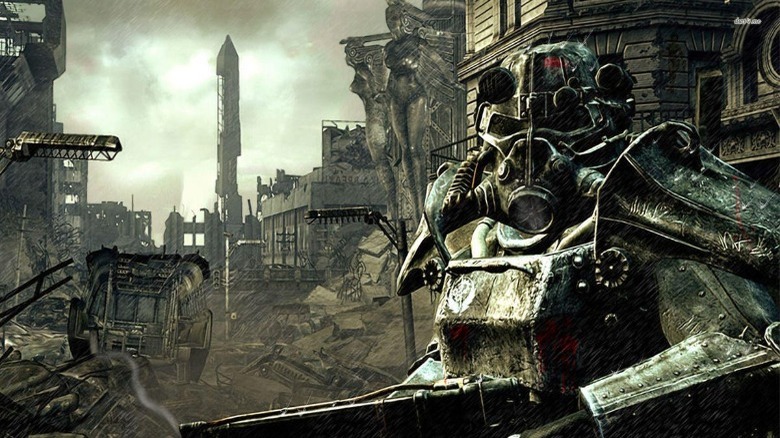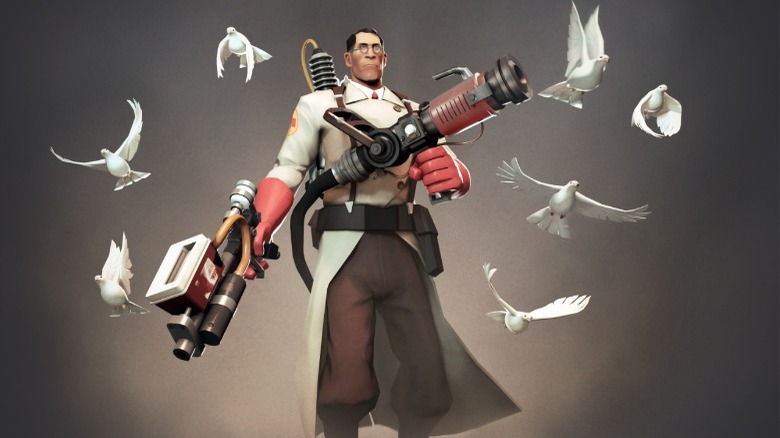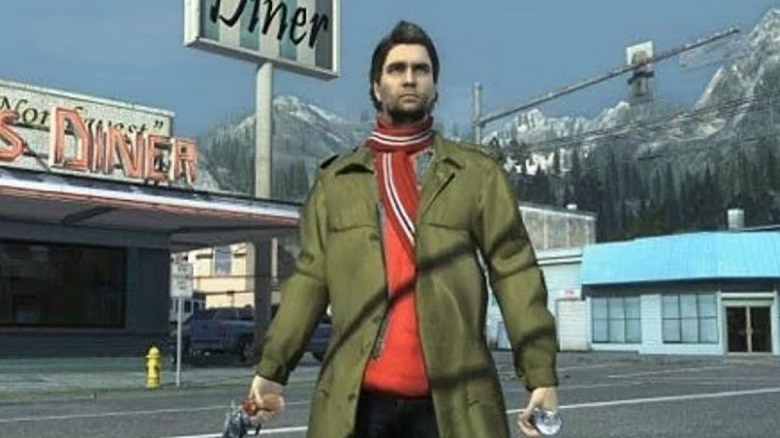Great Video Games That Survived Development Hell
Development Hell (proper noun): video game industry jargon used to describe the state of a game's development when things couldn't get much worse. Sometimes, games never escape from this awful, dark dimension, resulting in the resignation of creative directors, scripts changing hands, entire studios getting laid off, or the projects getting scrapped entirely. Other times, games find a way to crawl up out of this developmental abyss, only to disappoint fans everywhere. (See Duke Nukem Forever.)
Every once in a blue moon, however, games rise up from the fiery ashes of Development Hell like a triumphant phoenix, rewarding our virtuous patience by proving that their long gestation periods were ultimately worth the wait. These are some of those games.
Fallout 3
You probably know Fallout 3 as the Game of the Year-winning, post-apocalyptic, open-world role-playing game by Bethesda Game Studios from 2008. Players wander the nuclear wastelands surrounding Washington, D.C. while having a great time shooting mutants in their weird heads. But did you know that the version you got to play wasn't the original version Fallout 3?
"It was actually the second Fallout 3," Obsidian Entertainment CEO Fergus Urquhart told IGN. Like the game's predecessors, the original Fallout 3 — then codenamed Van Buren — was being built in 2D, which wasn't really up to par with current industry standards for a major tripe-A title. "Now 3D was the cool stuff," Urquhart explained. "So we were going to move from being a 2D engine and be a 3D engine, and so we actually started working with this 3D technology called NDL."
Of course, switching engines mid-development is like booking a direct flight straight into Development Hell — especially when the game's publisher (in this case, Interplay) was experiencing financial difficulties. As a result, the 2D Van Buren project ultimately became the Dungeons & Dragons-based RPG Icewind Dale — which, itself, is an excellent game — while Interplay eventually filed for bankruptcy and Black Isle Studios closed. The rights to Fallout 3 were then sold to Bethesda, who, unsurprisingly, started from scratch...hence the long wait.
Better late than never, however. The game was finally released 2008 and is widely considered to be one of Bethesda's best titles.
Team Fortress 2
Like many great video game developers, Valve does things on their own time. In the case of their hit team-based multiplayer first-person shooter Team Fortress 2 from 2007, however, Valve-time meant eager fans had to wait for a really, really long while.
Team Fortress 2 was first announced — believe it or not — all the way back in 1998. The following year, Valve gave gamers a taste of what ultimately wasn't to come by showing off a realistic, near-future team shooter in the vein of Counter-Strike. The turn of the millennium started the waiting game, however, when Valve announced they would be switching the game over to their own internally-developed game engine: Source. Switching engines is never a good sign, and six years later, the game was commonly presumed dead.
Surprising just about everyone, the game turned out to be very much alive — only it had matured into an entirely different beast than anyone was expecting. According to Kotaku, the game had apparently been completely reworked three or four times — and for the better. Gone was the original build's realism, vehicles, and air drops, and in their place stood an iconic cast of characters battling it out in cartoony settings with equally wacky weapons.
Team Fortress 2 was finally released in 2007 as part of The Orange Box, before receiving its own standalone edition the following year. The game remains both one of the best and most-iconic team-based first-person shooters ever created.
L.A. Noire
Developed by Team Bondi and originally released on the PlayStation 3, Xbox 360, and Windows in 2011, Rockstar Games' neo-noir detective story received both critical acclaim and commercial success — but getting there took seven years, and the road was rocky for the entire trip. L.A. Noire was originally slated to be published by Sony Computer Entertainment America, but they dropped the project after Team Bondi's studio founder Brendan McNamara allegedly spent "tens of millions" on proprietary technology in only the span of only one year. Too rich for Sony's blood, the title was (luckily) saved by Rockstar, who themselves poured loads of cash into the project...and delayed it another four times.
Though the game was great enough to warrant a 2017 remastering, McNamara and Team Bondi's reputations were permanently ruined once the game debuted. Multiple individuals involved with L.A. Noire's development came forward to make allegations about horrendous working conditions at the studio. "It's one thing for him to be angry behind closed doors, but it was incredibly common for him to scream at whoever was pissing him off in the middle of the office," said one anonymous employee about Brendan McNamara.
Rockstar, of course, is intimidated by no one and severed their relationship with the controversial development studio almost immediately after publishing L.A. Noire. Only months after the game's release, Team Bondi was placed into administration, liquidated, bought out, and hasn't been heard from since.
Diablo III
As the third chapter in one of the most beloved hack and slash game series ever created, Diablo III had some serious expectations to meet. Of course, Blizzard Entertainment delivered — but it took over a decade to craft the record-setting title.
Interestingly, Diablo III didn't wallow in developmental despair for the same reasons that plague other titles. According to Blizzard's Josh Mosqueira, the critically-successful and beloved Diablo II was just so darn good, that it's actually the reason Diablo III went through Development Hell at all.
"The specter of Diablo II loomed large over the team," Mosqueira once explained. "The pressure of trying to live up to the legacy of this incredible game weighed heavily on the team and impacted so many of the decisions."
Even after a decade of hard work, the game still ran into some serious issues at launch. "I think we did eight major patches on the game," lead content designer Kevin Martens explained in an interview with PC Gamer. "Like anything, best-laid plans meeting 15 million people usually means that you're going to learn a few things... or a lot of things in this case."
All the kinks eventually got ironed out, and Diablo III is a bonafide classic. As a clever means of apologizing to their fans, Blizzard even threw in an Easter Egg in the form of a secret level — titled "Development Hell" — in which you can slaughter zombies named after the individual developers themselves. No hard feelings.
Alan Wake
Microsoft Game Studios' and Remedy Entertainment's psychological action thriller Alan Wake didn't wallow in Development Hell as long as some other games... but it still had to deal with a brutal development cycle, nevertheless.
According to Remedy's head of franchise development Oskari 'Ozz' Häkkinen, development was stymied by the fact that, at the time, no engine existed that could accommodate their needs. "We checked to see if there were any engines out there that could to do the things that we needed," he explained to Joystiq, "and there wasn't anything. So with a team of 45 people, we built the technology from the ground up....We didn't anticipate that it would take five years."
Developing Alan Wake was made even more of a grind by the fact that Remedy is a small team. Häkkinen admitted in the same interview, "we are a very small studio, about 45 people, and for a team that small to make such a large game, it takes time. And you know we are a kind of company that isn't a factory that churns out games every year or every two years. We carefully craft our games and intellectual properties to be what they deserve to be."
Owlboy
Independent game creator D-Pad Studio's excellent platformer Owlboy began development in 2007. Nearly one full decade later, it was finally released. What was the holdup?
In short, they couldn't find a programmer. "Our main programmer, Blake, timed out of the project because of work about half a year ago," D-Pad's Simon Andersen explained to Destructoid in 2009, while the game still languished, unfinished. "We were in need of a new programmer but after sorting through the truckloads of people that showed up for the beta-testing and never returned afterward, we decided to keep the search internal to avoid getting a slew of applicants that weren't serious. We eventually found a replacement, but progress was slow and it eventually became clear we needed to find someone new. Another replacement was found but after another grueling training phase things stopped completely."
Finding yet another replacement proved to be quite the task for Andersen. "After this, I've been desperately trying to find someone to help out with the project, and to be honest, I'm almost at my wit's end."
Eventually, the ship was righted, and Owlboy was well worth the wait. (Whoever said game development was easy?)
Mother 3
As the sequel to the cult-classic Super Nintendo Entertainment System role-playing-game Earthbound (known originally as Mother 2 in Japan), Mother 3 is a little-known gem that never made it out of Japan. In fact, it almost never made it out — period.
Though Mother 3 was met with both critical and commercial success in its home country, the game's development was torturous — spanning 12 years and four Nintendo consoles. Originally developed for the Super Famicom and, later, the ill-fated Nintendo Disc Drive, Mother 3 hit a brick wall on August 22, 2000...when only a mere 30 percent of the game was finished.
"We couldn't bring it all together with the N64 hardware," Nintendo's legendary designer Shigeru Miyamoto candidly stated in an interview. "I wonder if there even existed a method to bring it together. There were plenty of parts that couldn't actually work on the N64 or that had a bad effect. It'd be nice if we could completely fix them by spending months and months revising the whole model and tinkering with the system, but in reality there were just so many issues."
Never one to give up on their own intellectual property, however, Nintendo eventually revived the project and released Mother 3 for the Game Boy Advance in 2006, which English-speaking fans have since unofficially translated. The game is definitely a winner, and — if you keep your fingers crossed — you may even get to play an official localization on your Nintendo Switch someday. Maybe.
Final Fantasy XV
To say that Final Fantasy XV was in Development Hell would be an understatement. Aside from switching gears by rebranding the game from its original title, Final Fantasy Versus XIII — a game more directly-related to Square Enix's lackluster Final Fantasy XIII series — the famed Japanese video game publisher experienced some serious internal issues, from top to bottom.
The company went through an internal restructuring during development, which caused its own problems. But so did its drive to dominate the Western market. "Switching over to a global model of doing things has been both the most important and most challenging part of development," the game's director, Hajime Tabata, explained to Red Bull Games. "On previous [Final Fantasy] titles we worked using an export model in which we made the games in Japan and then globalized them ready for export abroad. But with Final Fantasy XV we've switched over to a model that takes global tastes and interests more into account during the development. That has been the biggest thing for us."
Luckily, the quality of Final Fantasy XV stayed on par with the series' best, though it's arguably the most Western entry in the series. "The vision [from Final Fantasy Versus XIII to Final Fantasy XV] hasn't changed," Tabata said. "The vision we have always had is to try and see what the best possible thing we can do is. We want to put everything we've got into this and produce the very best thing possible."
Prey (2017)
The 2017 kinda-sequel to 2006's sci-fi first-person-shooter Prey is a classic Development Hell story, in which nobody's really sure exactly what happened — mostly due to the fact that the intellectual property changed hands so many times.
It began with Radar Group, a brand-management company co-founded by 3D Realms' CEO Scott Miller, who originally contracted Human Head Studios to make the original Prey in 2006. Thanks to the original game's success, Radar Group announced a sequel in 2008...but nobody actually seemed to be working on it. A few years later, Radar Group bought the rights to the Prey intellectual property, but sold it a month later to ZeniMax Media, Bethesda Studios' parent company.
Bethesda — being the solid game makers that they generally are — seemed to have things all ready to go for a 2012 release...but then things got ugly. Sources involved with the project told IGN that Bethesda was bullying Human Head Studios, apparently part of an effort to buy them out. Human Head refused to be bled dry and effectively went on strike, halting all development on the game. Bethesda ended up just waiting the work stoppage out until the contract expired and all rights to Prey reverted back into Bethesda's hands. In 2014, Prey 2 was officially canceled.
Leaked emails later revealed that the game was very much not canceled, however, and — lo and behold — 2017 saw the release of Prey, though it was short a 2 by the end.
Resident Evil 4
Resident Evil 4 stands out as one of those games that unbelievably managed to not only escape from a self-imposed Development Hell — but save a struggling franchise from certain death.
We know that the development of Resident Evil 4 was rough going, but — thanks to Japanese developers' tendency to keep their lips sealed about internal issues — we'll never know exactly what happened. Nevertheless, it's believed the game was scrapped and restarted at least three times...if not more. It's also commonly believed that scrapped versions of the game were significantly more action-oriented (a trend we've seen throughout the series' history) and thus early builds of the game likely made their way into the likes of Capcom's Devil May Cry. Platinum Games' Hideki Kamiya and Hiroshi Shibata also once controlled Resident Evil 4's development, meaning shades of those scrapped builds may have also made their way into the likes of Ōkami and Bayonetta. Whatever happened, one thing is clear: those behind the long and drawn-out development of Resident Evil 4 had no idea what they actually wanted the game to be.
Luckily, when it was all said and done, we got one of the greatest — if not the greatest — Resident Evil games ever made. Thanks, Development Hell!




